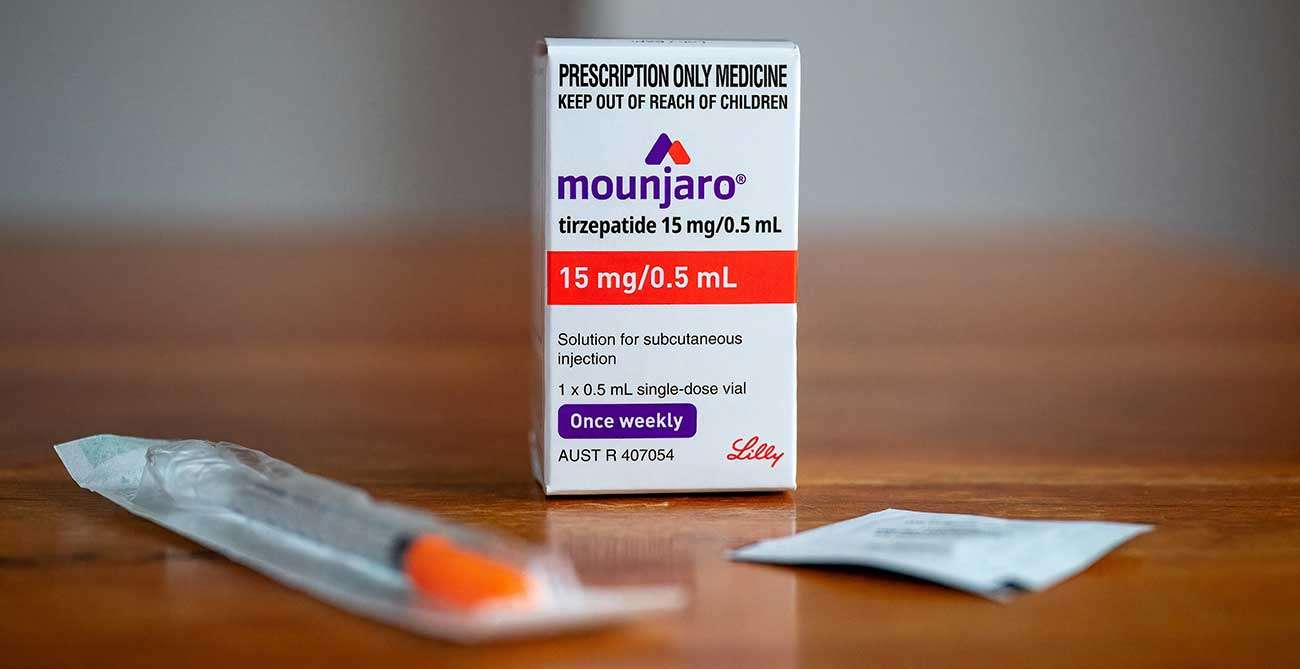Mounjaro, scientifically known as tirzepatide, represents a significant advancement in the treatment of type 2 diabetes. Approved by the FDA in May 2022, this injectable medication works as a dual glucose-dependent insulinotropic polypeptide (GIP) and glucagon-like peptide-1 (GLP-1) receptor agonist. Clinical trials have demonstrated its remarkable efficacy in blood glucose management, with patients experiencing average A1C reductions of 1.8% to 2.1% depending on dosage. The medication’s innovative mechanism targets multiple metabolic pathways simultaneously, addressing insulin resistance, improving pancreatic function, and regulating appetite through central nervous system interaction. This comprehensive approach explains why Mounjaro has outperformed several established diabetes medications in head-to-head trials. Beyond glycemic control, Mounjaro has garnered attention for its substantial impact on weight management. Participants in the SURPASS clinical trial series experienced significant weight reduction, averaging 15-25 pounds over 40-52 weeks of treatment. These weight loss effects stem from the medication’s ability to slow gastric emptying, promote satiety, and influence metabolic processes. Healthcare providers increasingly recognize Mounjaro’s dual benefits for patients struggling with both diabetes and obesity—conditions that frequently coexist and compound each other’s complications. The medication’s weekly administration schedule also offers convenience advantages over daily treatment options, potentially improving adherence rates among patients managing chronic metabolic conditions.
Table of Contents
CK Health Turkey does not offer Mounjaro treatment. For healthier and more permanent weight loss solutions, please visit our Gastric Sleeve Surgery page or click here to leave us a message.
Understanding Mounjaro Medication and Its Purpose
Mounjaro is an advanced medication that has gained significant attention in the medical community for its effectiveness in treating type 2 diabetes. The following sections detail what this medication is, how it functions, and its intended medical applications.
What is Mounjaro (Tirzepatide)?
Mounjaro (tirzepatide injection) represents a novel class of medications known as dual GLP-1 and GIP receptor agonists. This prescription medication was developed by Eli Lilly and received FDA approval in 2022 specifically for improving glycemic control in adults with type 2 diabetes. Unlike traditional diabetes medications, the tirzepatide in Mounjaro targets two incretin hormones simultaneously, making it particularly effective for managing blood glucose levels. The Mounjaro medicine is administered as a subcutaneous injection and comes in various dosage strengths to accommodate individual patient needs.
How Mounjaro Works: The Medical Mechanism
The Mounjaro drug functions through a sophisticated dual-action mechanism. As a GLP-1 and GIP receptor agonist, tirzepatide mimics the effects of natural incretin hormones in the body. When administered, Mounjaro medication stimulates insulin secretion from pancreatic beta cells when blood glucose levels are elevated. Simultaneously, it suppresses glucagon secretion from pancreatic alpha cells, reducing hepatic glucose production. The mounjaro glp-1 component also slows gastric emptying, which helps regulate post-meal glucose spikes by delaying the absorption of carbohydrates.
Primary Uses of Mounjaro
The primary FDA-approved use for Mounjaro is improving glycemic control in adults with type 2 diabetes mellitus, as an adjunct to diet and exercise. Clinical studies demonstrate that the tirzepatide injection significantly reduces HbA1c levels, often more effectively than other diabetes medications. It’s crucial to understand that while some weight reduction may occur as a side effect, Mounjaro is not approved for weight loss treatment. Medical professionals strongly advise against using this medication solely for weight management due to potential serious side effects. Those seeking weight loss solutions should instead consider medically proven options like gastric sleeve or gastric bypass procedures.
Mounjaro for Weight Loss Treatment
Tirzepatide, marketed as Mounjaro, has garnered significant attention in recent years. While primarily developed for type 2 diabetes management, many individuals have shown interest in its secondary effects on body weight.
Mounjaro’s Role in Weight Loss
Mounjaro works by mimicking two naturally occurring incretin hormones: GLP-1 (glucagon-like peptide-1) and GIP (glucose-dependent insulinotropic polypeptide). These hormones play crucial roles in blood sugar regulation and digestive processes. However, it’s important to understand that Mounjaro is specifically FDA-approved for type 2 diabetes management, not weight loss. The medication’s effect on appetite and food intake is a secondary mechanism that occurs as part of its primary function in glucose regulation. Studies indicate that patients using tirzepatide mounjaro for weight loss purposes are potentially misusing the medication outside its intended purpose, which can lead to serious health complications including pancreatitis, thyroid tumors, and gastrointestinal issues.
Prescribing Guidelines for Weight Management
Healthcare providers considering prescribing Mounjaro for weight loss should be aware that this represents off-label usage. Medical ethics require physicians to prioritize patient safety above all else. The current medical consensus strongly advises against Mounjaro weight loss injection use in non-diabetic patients solely seeking weight reduction. Instead, healthcare professionals should guide patients toward evidence-based weight management solutions like bariatric surgery options. Gastric sleeve and gastric bypass procedures offer scientifically validated, long-term weight management outcomes with established safety profiles when performed by qualified surgeons.
Effectiveness of Mounjaro in Weight Management Programs
While some studies have shown weight reduction in diabetes patients using Mounjaro, this diabetes medicine for weight loss (Mounjaro) lacks long-term safety data for non-diabetic individuals. Clinical trials examining tirzepatide were primarily designed to assess glycemic control, not weight management. The observed weight changes were secondary endpoints and must be interpreted cautiously. For sustainable weight management, medical professionals recommend comprehensive approaches including dietary modifications, regular physical activity, behavioral therapy, and in appropriate cases, surgical interventions. Bariatric procedures have demonstrated superior long-term outcomes compared to pharmaceutical approaches, with proven metabolic benefits and resolution of obesity-related comorbidities beyond what medication alone can achieve.
Mounjaro Dosage Administration and Available Strengths
Administering Mounjaro injections requires understanding proper technique and dosage protocols to ensure optimal results. The Mounjaro pen comes in various strengths designed for a progressive treatment approach, with specific guidelines for each dosage level.
Proper Injection Techniques for Mounjaro
- Prepare the injection site by selecting an appropriate area such as the abdomen, thigh, or upper arm where there is adequate subcutaneous tissue.
- Inspect the Mounjaro pen before use, ensuring the solution is clear, colorless, and free from particles.
- Clean the selected injection site with an alcohol swab and allow it to dry completely before injecting mounjaro.
- Remove the pen cap and verify the medication appears as expected without air bubbles.
- Position the mounjaro needle perpendicular to the skin surface at a 90-degree angle.
- Press and hold the injection button after placing the needle against your skin, counting to 10 before removing to ensure complete delivery.
- Dispose of the used mounjaro shot properly in a sharps container immediately after injection.
- Rotate injection sites with each dose to prevent tissue damage and ensure proper absorption.
Available Dosage Strengths of Mounjaro
Mounjaro is available in seven distinct dosage strengths, providing flexibility in treatment customization. The starting mounjaro dose typically begins at 2.5mg, allowing patients to acclimate to the medication. Following initial adaptation, patients may progress to mounjaro 5mg, then to mounjaro 7.5, continuing to mounjaro 10mg in stock at many pharmacies. Higher strengths include mounjaro 12.5 and ultimately mounjaro 15mg for maintenance therapy. Each strength is delivered via a single-use, pre-filled pen designed for once-weekly administration. The precision-engineered delivery system ensures accurate dosing with each mounjaro injection, featuring a thin mounjaro needle designed to minimize discomfort during administration.
Dose Level Prescriptions During Treatment
Clinical protocols for taking mounjaro typically follow a structured titration schedule with incremental increases. Most patients begin with the 2.5mg dose for the first four weeks before advancing. Progression to higher doses occurs at 4-week intervals, with monitoring for tolerance and response. The transition from mounjaro 7.5 to 10mg often represents a significant therapeutic threshold for many patients. During treatment, healthcare providers evaluate individual response patterns to determine optimal dosing. For some patients, intermediate strengths like mounjaro 12.5 provide appropriate therapeutic effects without advancing to the maximum dose. Adjustments may be necessary based on clinical response and management of side effects. The goal of dose titration is to find the minimum effective dose that provides therapeutic benefit while minimizing adverse effects.
Mounjaro Safety and Eligibility
Tirzepatide, marketed as Mounjaro, is FDA-approved specifically for treating type 2 diabetes. Understanding its safety profile and knowing who should or shouldn’t use this medication is crucial for preventing serious health complications.
Safety Concerns Associated with Mounjaro Use
Mounjaro safety evaluations reveal several potential side effects that patients and healthcare providers should monitor closely. Common adverse reactions include nausea, vomiting, diarrhea, and decreased appetite, which typically diminish over time. More serious concerns include potential thyroid C-cell tumors, particularly in patients with a personal or family history of medullary thyroid carcinoma or Multiple Endocrine Neoplasia syndrome type 2.
Clinical trials have documented cases of acute pancreatitis in patients using Mounjaro, requiring immediate medical attention if symptoms like severe abdominal pain occur. Additionally, gallbladder problems, including cholelithiasis and cholecystitis, have been reported. The medication may also cause hypoglycemia, especially when combined with insulin secretagogues or insulin.
Contraindications for Mounjaro
Several absolute contraindications make Mounjaro unsafe for certain individuals. Patients with personal or family history of medullary thyroid carcinoma should not take Mounjaro. Similarly, those with Multiple Endocrine Neoplasia syndrome type 2 are advised against its use. Individuals who have experienced severe hypersensitivity reactions to tirzepatide or any of its components must avoid this medication.
Who Should Use Mounjaro?
Mounjaro is appropriate for adults with type 2 diabetes whose blood glucose levels remain uncontrolled despite diet, exercise, and other antidiabetic medications. Candidates should have no history of pancreatitis, medullary thyroid carcinoma, or severe gastrointestinal disease. Patients must be willing to adhere to regular monitoring schedules and should understand that this medication is strictly for diabetes management, not weight loss.
Who Cannot Take Mounjaro?
Besides those with contraindicated conditions, pregnant or breastfeeding women should not use Mounjaro due to insufficient safety data. Individuals with severe gastrointestinal diseases, including gastroparesis, may experience worsened symptoms. Those with history of pancreatitis, suicidal behavior, or depression require careful evaluation before treatment initiation. Patients seeking weight loss solutions without diabetes should not take Mounjaro and should instead consult with healthcare providers about evidence-based approaches like gastric sleeve or gastric bypass procedures, which offer long-term effectiveness without the significant side effect profile associated with off-label medication use.
Mounjaro Prescription Process and Purchase Methods
Navigating the Mounjaro procurement journey requires understanding both prescription requirements and various purchasing channels. Healthcare professionals across the UK and beyond have established specific protocols for this medication.
Obtaining a Mounjaro Prescription
Securing a mounjaro prescription typically begins with a comprehensive consultation with a qualified healthcare provider. Most physicians require laboratory tests and a thorough medical history review before prescribing. In regions like Scotland, the prescription process follows the NHS guidelines with specific documentation requirements. Many patients explore getting mounjaro online through telehealth services, which offer virtual consultations while maintaining prescription standards.
Purchasing Options for Mounjaro
After obtaining a valid prescription, patients have multiple avenues for purchasing this medication. Mounjaro near me searches often lead to local pharmacies, while mounjaro boots availability offers convenience for UK residents. Online pharmacies provide competitive pricing options, often featuring mounjaro best price guarantees. When ordering mounjaro online, patients should verify pharmacy credentials and prescription requirements to ensure legitimacy and product authenticity.
Monthly Costs of Mounjaro Treatment
The mounjaro cost per month varies significantly based on dosage, location, and insurance coverage. Without insurance, mounjaro injection price typically ranges between £150-£300 per month. Patients seeking cheap mounjaro options can explore manufacturer savings programs or compare mounjaro prices across different pharmacies. The mounjaro monthly cost may decrease with long-term prescription plans or bulk ordering options.
Pharmacy Availability of Mounjaro
Mounjaro availability varies by location, with mounjaro uk boots pharmacies maintaining consistent stock in major cities. Rural areas may experience occasional supply limitations, requiring advance ordering. Many pharmacies offer notification systems alerting patients when mounjaro for sale becomes available. The cheapest mounjaro options typically come from pharmacy discount programs or manufacturer coupons that can significantly reduce retail pricing.



